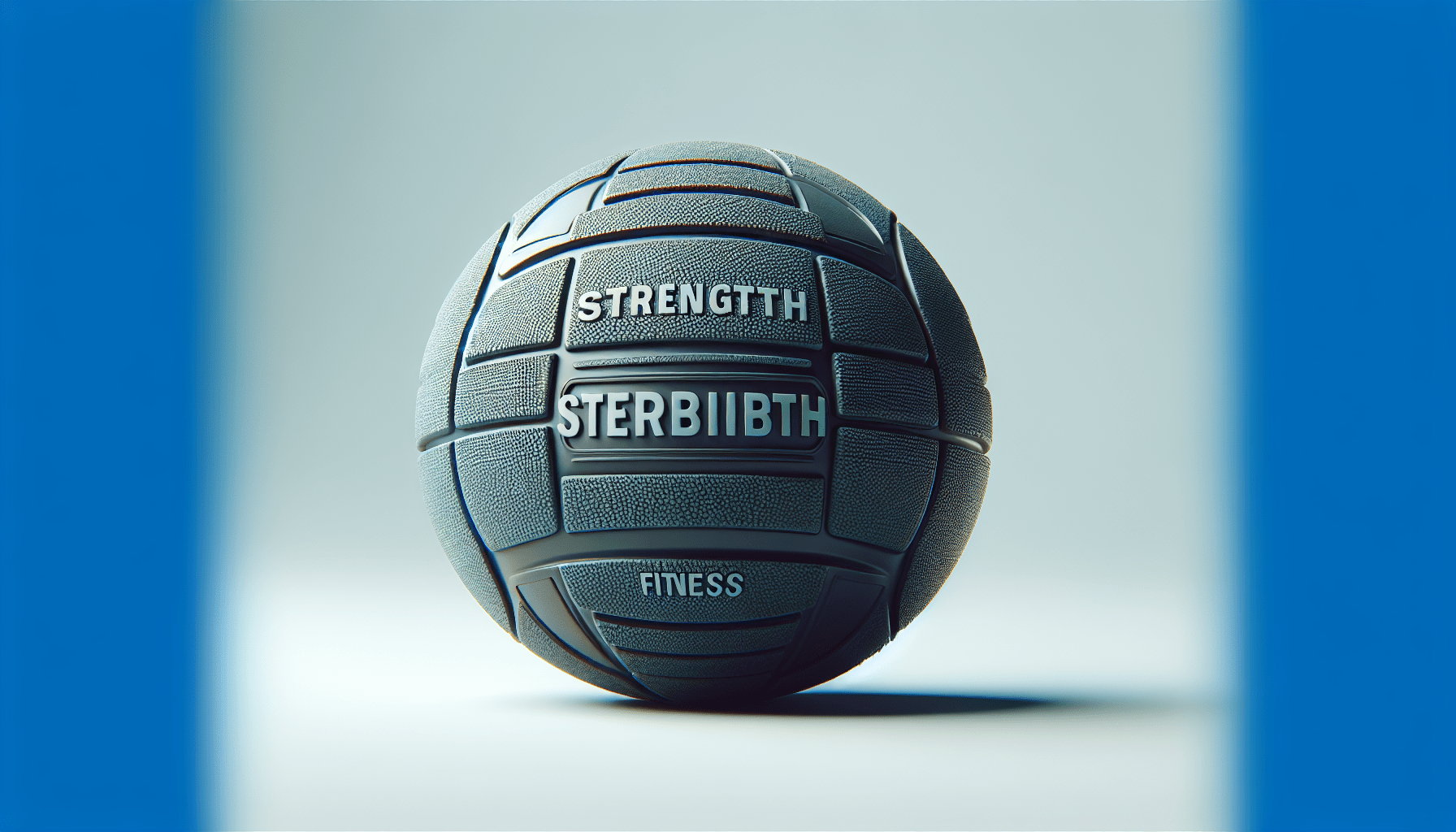If you’re looking to tighten and flatten your stomach without doing sit-ups or hitting the gym, Dr. Mandell has the perfect solution for you. The key lies in strengthening the transverse abdominis muscle, which supports your lower back and pelvic structures. By practicing a simple exercise that focuses on this muscle, you can improve your posture, support your pelvic floor, and achieve a toned stomach. Pairing this exercise with a healthy diet and regular physical activity can help you reach your fitness goals and improve your overall well-being.
By following Dr. Mandell’s guidance, you can start working towards a stronger core and a flatter stomach right at home. With a focus on proper breathing techniques and targeted muscle activation, you can see significant improvements in both your physical appearance and internal health. Incorporating these exercises into your daily routine, along with making healthy lifestyle choices, can lead to a happier and more confident you.
Overview of Abdominal Exercise by Dr. Mandell
Abdominal exercises are crucial for maintaining a strong core and overall body function. Dr. Mandell emphasizes the importance of the transverse abdominis muscle, which plays a significant role in supporting the lower back, pelvic structures, and surrounding organs. Strengthening this muscle not only contributes to core stability but also enhances breathing support and overall functionality of vital bodily processes.
Importance of Transverse Abdominis Muscle
The transverse abdominis muscle is a deep core muscle that acts as a natural corset, providing stability and support to the spine, pelvis, and internal organs. By strengthening this muscle, you can improve your posture, reduce the risk of lower back pain, and enhance the overall functionality of your core muscles.
Role in Lower Back and Pelvic Support
Strong transverse abdominis muscles are essential for maintaining proper alignment of the spine and pelvis. These muscles work in synergy to support the lower back and prevent injuries by providing a solid foundation for movement and stability. By engaging and strengthening these muscles, you can alleviate stress on the lower back and improve overall spinal health.
Support for Surrounding Organs
The transverse abdominis muscle holds and supports the vital organs in your abdominal cavity. By strengthening this muscle, you can ensure better organ functionality, improve digestion, and support optimal overall health. This muscle also plays a significant role in maintaining proper intra-abdominal pressure, which is essential for various bodily functions such as urination, defecation, vomiting, and childbirth.
Contribution to Core Muscle Strength
In addition to providing support for the lower back, pelvis, and organs, the transverse abdominis muscle is a key component of core muscle strength. A strong core is crucial for performing daily activities, maintaining balance, and preventing injuries. By focusing on strengthening the transverse abdominis, you can improve your overall core stability and functional movement patterns.
Benefits of Strengthening Transverse Abdominis Muscle
Strengthening the transverse abdominis muscle offers a wide range of benefits that extend beyond just physical appearance. By incorporating exercises that target this deep core muscle, you can experience the following advantages:
Improved Lower Back Health
A strong transverse abdominis muscle can help alleviate lower back pain by providing stability and support to the spine. By strengthening this muscle, you can reduce the risk of injuries and improve overall spinal health, leading to better posture and reduced discomfort in the lower back region.
Enhanced Pelvic Support
The transverse abdominis plays a crucial role in supporting the pelvis and maintaining proper alignment of the hips and lower body. Strengthening this muscle can help prevent pelvic floor disorders, improve pelvic stability, and promote overall pelvic health.
Better Organ Functionality
Strong transverse abdominis muscles support and protect the organs within the abdominal cavity, leading to improved digestion, circulation, and overall organ functionality. By strengthening this muscle, you can enhance the efficiency of vital bodily processes and promote better overall health.
Increased Core Stability
The transverse abdominis is a key muscle for core stability, which is essential for proper movement patterns, balance, and functional activities. By strengthening this muscle, you can enhance your core stability, improve overall strength, and reduce the risk of injuries during physical activities.
Enhanced Breathing Support
The transverse abdominis muscle plays a role in breathing by assisting in the regulation of intra-abdominal pressure. By strengthening this muscle, you can improve your breathing efficiency, enhance respiratory function, and support proper diaphragmatic breathing.

Description of the Best Abdominal Exercise
Dr. Mandell highlights a specific exercise that effectively targets the transverse abdominis muscle and provides a step-by-step guide on how to perform it correctly. By focusing on proper form and technique, along with modifications for different fitness levels, individuals can maximize the benefits of this exercise and strengthen their core effectively.
Targeting the Transverse Abdominis Muscle
The exercise recommended by Dr. Mandell focuses on activating and strengthening the transverse abdominis muscle, which is essential for core stability and support. By targeting this deep core muscle, individuals can improve overall abdominal strength and functional movement patterns.
Step-by-Step Guide to Performing the Exercise
To perform the exercise, follow these steps:
- Begin by taking a deep breath and exhaling fully to engage the transverse abdominis muscle.
- Pull your belly button back towards your spine, creating a sensation of drawing your abdomen inward.
- Hold this position for 5-7 seconds while maintaining proper posture and breathing control.
- Relax and repeat the movement for a total of 12 repetitions, gradually increasing the duration and intensity as you build strength.
Ensuring Proper Form and Technique
Proper form and technique are crucial when performing this exercise to effectively engage the transverse abdominis muscle. Focus on maintaining a neutral spine, avoiding excessive arching or rounding, and breathing deeply to activate the core muscles. It’s essential to perform the exercise with control and precision to maximize its benefits.
Modifications for Different Fitness Levels
This exercise can be modified to suit individuals of varying fitness levels. Beginners may start with shorter holds and fewer repetitions, gradually increasing the intensity as they become stronger. Advanced individuals can add resistance or incorporate variations to challenge their core muscles further and progress in their fitness journey.
Alternative Abdominal Exercises
In addition to the recommended exercise by Dr. Mandell, there are various other abdominal exercises that can help strengthen the core muscles and improve overall abdominal strength. Incorporating a mix of exercises into your workout routine can target different muscle groups and promote comprehensive core strength.
Crunches
Crunches are a classic abdominal exercise that targets the rectus abdominis (six-pack muscles) and can be performed in various variations to challenge different muscle fibers. Ensure proper form and avoid pulling on the neck or straining the lower back while performing crunches.
Russian Twists
Russian twists engage the obliques (side abdominal muscles) and help improve rotational stability and strength. By twisting from side to side while holding a weight or resistance, individuals can target the deep core muscles and enhance overall abdominal strength.
Planks
Planks are a full-body exercise that primarily targets the core muscles, including the transverse abdominis. Holding a plank position engages the entire core, back, and shoulders, promoting stability, endurance, and strength in the abdominal region.
Leg Raises
Leg raises target the lower abdominal muscles and help strengthen the hip flexors and lower core region. By lifting the legs off the ground while lying on your back, individuals can engage the transverse abdominis and improve overall lower abdominal strength.
Mountain Climbers
Mountain climbers are a dynamic exercise that combines cardiovascular endurance with core strength. By alternating knee drives in a plank position, individuals can engage the transverse abdominis and promote functional core stability and endurance.

Tips for Maximizing Abdominal Workout
To optimize your abdominal workout and achieve the best results, consider incorporating the following tips into your fitness routine. Consistency in training, balanced nutrition, adequate rest and recovery, and incorporating cardio exercises can enhance the effectiveness of your abdominal workout and promote overall health and fitness.
Consistency in Training
Consistency is key when it comes to improving abdominal strength and core stability. Set a regular workout schedule and commit to performing abdominal exercises consistently to build strength, endurance, and stability in the core muscles.
Balanced Nutrition for Muscle Building
Proper nutrition plays a significant role in muscle building and overall health. Ensure you are consuming a balanced diet rich in lean proteins, complex carbohydrates, healthy fats, and essential nutrients to support muscle growth, recovery, and overall well-being.
Adequate Rest and Recovery
Rest and recovery are essential components of a successful workout routine. Allow your muscles time to recover and repair between workouts to prevent overtraining, promote muscle growth, and reduce the risk of injuries. Aim for quality sleep, hydration, and relaxation to support your body’s recovery process.
Incorporating Cardio for Overall Fitness
Cardiovascular exercise is important for overall fitness and can complement your abdominal workout routine. Incorporate activities such as running, cycling, swimming, or aerobics to improve cardiovascular health, burn calories, and enhance endurance while supporting your abdominal strength training efforts.
Common Mistakes to Avoid
When performing abdominal exercises, it’s essential to avoid common mistakes that can compromise your form, technique, and results. By being mindful of these errors and focusing on proper execution, you can maximize the effectiveness of your workout and prevent potential injuries or setbacks.
Overarching the Lower Back
Avoid excessive arching or overarching of the lower back during abdominal exercises to prevent strain on the spine and lower back muscles. Maintain a neutral spine position and engage the core muscles to support proper alignment and reduce the risk of injuries.
Using Momentum Instead of Muscle Strength
Focus on using your muscles, not momentum, to perform abdominal exercises effectively. Avoid swinging or using momentum to lift or lower your body during movements and prioritize controlled, deliberate motions to engage the core muscles and maximize results.
Neglecting Breathing Technique
Proper breathing technique is crucial during abdominal exercises to engage the core muscles fully and support stability. Remember to breathe deeply, exhale on exertion, and maintain a steady breathing pattern to enhance the effectiveness of your workout and support proper muscle engagement.
Skipping Warm-Up and Cool-Down
Always start your workout with a proper warm-up to prepare your body for exercise and prevent injuries. Similarly, finish your workout with a cool-down to lower your heart rate, stretch your muscles, and aid in recovery. Skipping warm-up and cool-down routines can increase the risk of injuries and hinder your progress.

Progression and Modification
As you advance in your fitness journey and strengthen your core muscles, consider progressing your abdominal exercises to continue challenging your body and achieving optimal results. By increasing repetitions and sets, adding resistance, trying advanced variations, and incorporating stability equipment, you can challenge your core muscles and promote continuous growth and improvement.
Increasing Repetitions and Sets
Gradually increase the number of repetitions and sets in your abdominal workout routine to challenge your muscles and promote progressive overload. By pushing your limits and increasing the workload, you can stimulate muscle growth, improve endurance, and enhance core strength over time.
Adding Resistance to the Exercise
Incorporating resistance, such as dumbbells, resistance bands, or medicine balls, into your abdominal exercises can intensify the workout and target different muscle groups. By adding resistance, you can challenge your core muscles further, promote strength gains, and enhance overall abdominal strength and stability.
Trying Advanced Variations
Explore advanced variations of traditional abdominal exercises, such as plank variations, leg raise progressions, or Russian twist modifications, to challenge your core muscles and promote functional strength. By trying new exercises and variations, you can target different muscle fibers, improve coordination, and enhance overall core stability and strength.
Incorporating Stability Equipment
Utilize stability equipment, such as stability balls, Bosu balls, or balance boards, to add an element of instability to your abdominal exercises. By incorporating stability equipment, you can engage more muscles, improve balance and coordination, and challenge your core muscles in different ways to enhance overall strength and stability.
Safety Precautions and Injury Prevention
When engaging in abdominal exercises, it’s essential to prioritize safety, listen to your body’s signals, and take precautions to prevent injuries. By following safety guidelines, avoiding excessive strain, seeking professional guidance if needed, and using proper equipment, you can maintain a safe and effective workout routine that promotes optimal health and well-being.
Listening to the Body’s Signals
Pay attention to your body’s signals during exercise and stop if you experience pain, discomfort, or unusual sensations. Listen to your body’s limits, adjust your workout intensity accordingly, and seek medical advice if you encounter persistent pain or symptoms that raise concerns.
Avoiding Excessive Strain
Avoid overexerting yourself or performing exercises with excessive strain on your muscles, joints, or spine. Focus on proper form, technique, and controlled movements to prevent injuries, strain, or overuse of muscles. Gradually progress your workouts and challenge your body safely to promote long-term health and fitness.
Seeking Professional Guidance if Needed
If you are new to abdominal exercises or experience specific health conditions or concerns, consider seeking professional guidance from a fitness trainer, physical therapist, or healthcare provider. A professional can provide personalized recommendations, modifications, or exercises tailored to your individual needs and help you achieve your fitness goals safely and effectively.
Using Proper Equipment
Use appropriate workout attire, footwear, and equipment when engaging in abdominal exercises to prevent injuries and ensure optimal performance. Select equipment that is suitable for your fitness level and goals, follow safety guidelines for equipment use, and maintain proper form and technique during exercises to minimize the risk of accidents or injuries.

Tracking Progress and Setting Goals
To monitor your fitness progress, set achievable goals, and stay motivated on your fitness journey, consider tracking your workouts, setting realistic and measurable goals, celebrating achievements, and reassessing and adjusting your goals periodically. By maintaining a workout journal, setting milestones, and staying committed to your fitness routine, you can track your progress, stay accountable, and work towards continuous improvement and success.
Keeping a Workout Journal
Keep a workout journal to record your exercises, sets, repetitions, and any notes or observations about your workouts. Tracking your progress in a journal can help you monitor improvements, identify patterns, and stay motivated to achieve your fitness goals over time.
Setting Realistic and Measurable Goals
Set specific, measurable, achievable, relevant, and time-bound (SMART) goals for your abdominal workout routine. Define clear objectives, timelines, and metrics to track your progress, celebrate achievements, and stay focused on your fitness goals to maintain motivation and drive.
Celebrating Achievements
Celebrate your fitness achievements, milestones, and progress along the way to acknowledge your hard work, dedication, and commitment to your health and well-being. Recognize your accomplishments, reward yourself for reaching milestones, and stay motivated to continue challenging yourself and achieving new goals.
Reassessing and Adjusting Goals Periodically
Periodically assess your progress, reassess your goals, and adjust your workout routine as needed to align with your evolving fitness needs and aspirations. Stay flexible, open to change, and receptive to feedback to enhance your workout experience, maintain momentum, and achieve sustainable results in your fitness journey.
Conclusion
In conclusion, abdominal exercises are essential for strengthening the core muscles, promoting overall health, and enhancing physical well-being. Dr. Mandell’s emphasis on the importance of the transverse abdominis muscle highlights the key role it plays in supporting the lower back, pelvic structures, and surrounding organs. By incorporating the best abdominal exercise, focusing on form and technique, exploring alternative exercises, and following safety precautions and injury prevention measures, individuals can maximize the benefits of their abdominal workout and achieve optimal results in their fitness journey. Start implementing Dr. Mandell’s recommendations, track your progress, set achievable goals, and prioritize your health and well-being for improved strength, stability, and overall fitness. Wishing you success on your abdominal exercise journey and a healthier, happier lifestyle.

